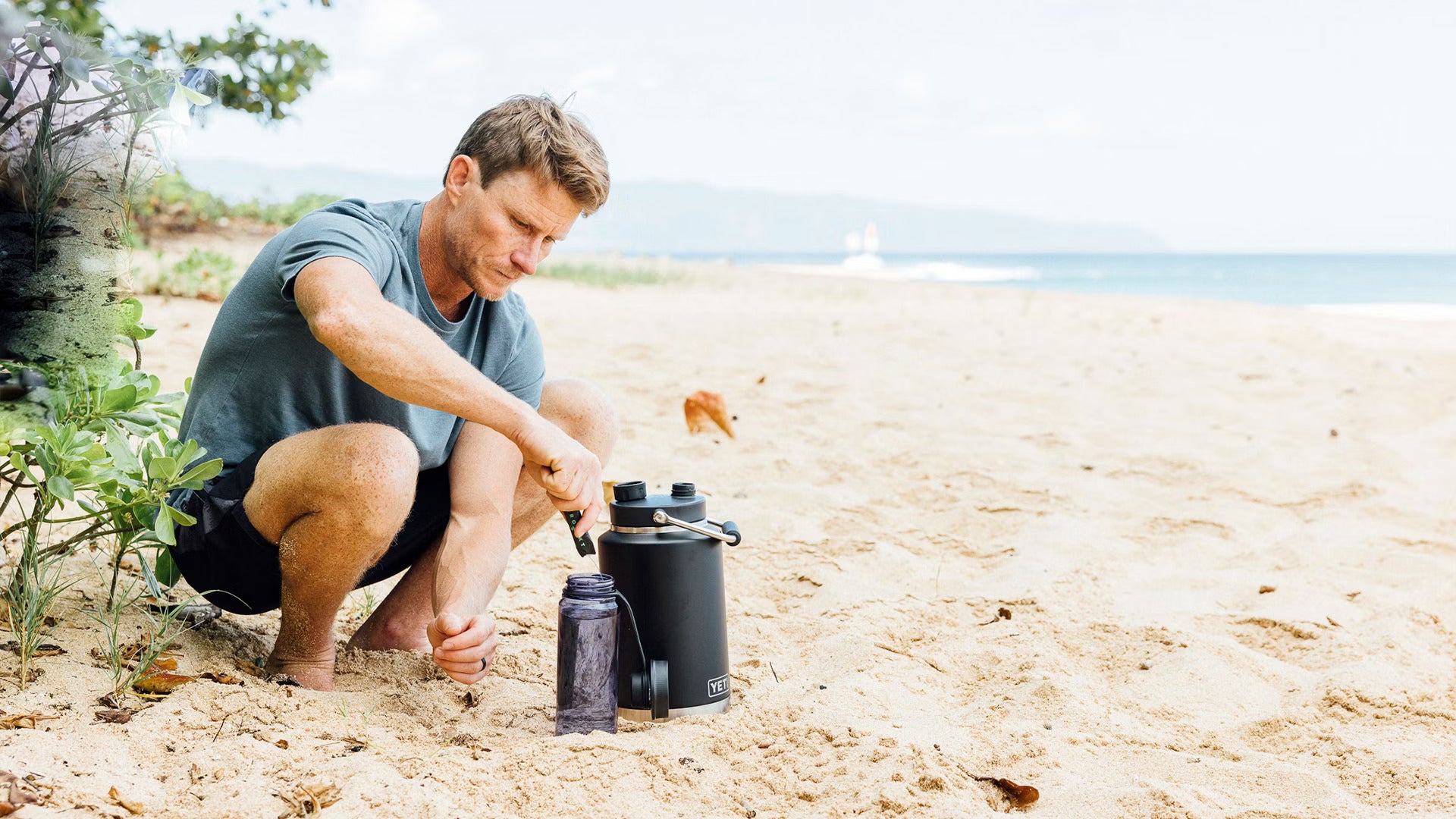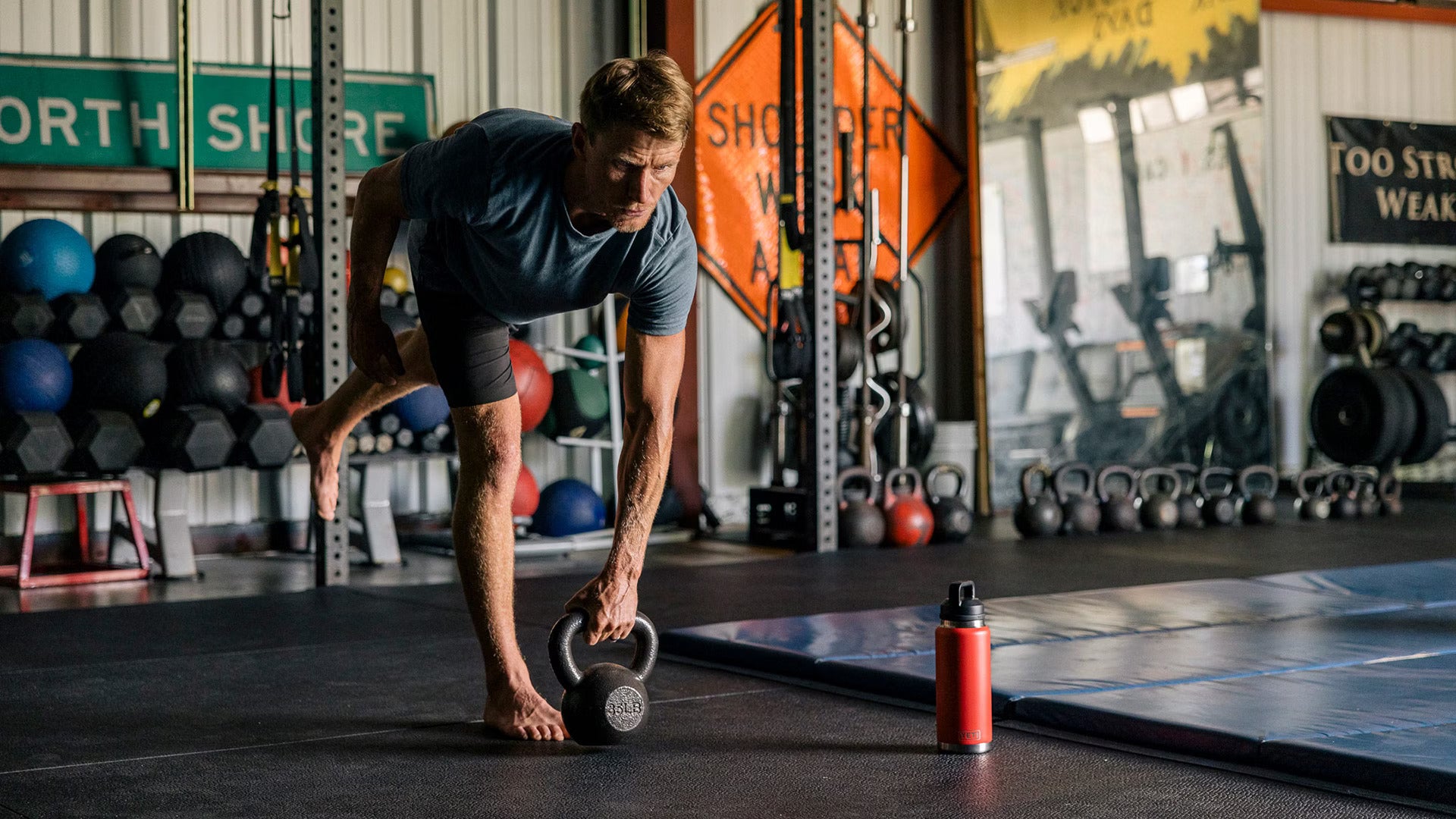COASTAL
STAYING READY
FOR THE HOLD
DOWN
Ambassador Mark Healey is a professional big wave surfer and an elite waterman. For Mark, physical fitness is a matter of life and death. Here’s how he stays prepared to take on the ocean’s heavy water and the dangers that come with surfing 30+ foot waves.
To me, big wave surfing at its core has always been about the challenge. The swells, the risks, the physical and mental demands — they’re all, well, big. Especially the wipeouts. When up to fifty feet of water is coming down on you, it’s a moment of sensory overload and how you train for it can be the difference between life and death. Even having a 1% bigger “gas tank” – whether that’s cardio bandwidth, decision making through fatigue, or improved reaction time, my ability to get out of a bad situation can come from the training I’ve put in.

I spend a lot of time in the ocean, but varying my workouts with weight training in the gym helps me stay agile and strong. Plus, since surfing can be a very individual sport, getting into the gym with other people to enjoy some shared suffering also helps me push myself. Ultimately the work and training I do is in service of achieving incremental gains.
“Much of my training is preparing for the inevitable. When I train, I do my best to simulate moments of great physical duress.”
Mark Healey,
Ambassador & Big Wave Surfer

5 Ways I Prep For 30+ Feet of Water
When a surfer is charging on a perfect wave, you’re only seeing 10% — the guts and the glory of it. Here’s a quick look at the remaining 90% of the sport: the daily physical fitness.
1: EMBRACE THE MISERY
Much of my training is preparing for the inevitable: getting hit by a big wave. So I do my best to simulate these moments of great physical duress by pushing my CO2 tolerance. My on-land method is a combination of a stationary bike workout and breath holding: I bike for forty minutes, holding my breath for 30 seconds every other minute, pumping up the resistance every 5 minutes while maintaining the same output. It’s absolute misery. But it works.
2: BECOME ONE WITH THE WATER
You can’t physically impose your will on a force like the ocean, you can only respond. And when every second counts, the way you operate in extreme ocean conditions needs to be second nature. In addition to surfing, I spend as much time in and around the ocean as possible, whether that’s in training with open-water swimming, underwater breath-holding drills, or recreationally with spearfishing and diving.
3: AVOID A SLEEP HANGOVER
It takes only 24 hours of poor-quality sleep to get to about 0.08 BAC, leaving a person legally intoxicated and impairing judgment, equilibrium, and cognitive abilities. So when I travel 18+ hours to remote big wave destinations, I try to have extra time to catch up on any lost sleep before I hit the water.
4: HYDRATE ON A CELLULAR LEVEL
If I’m not properly hydrated, my muscles will tense up and waste precious energy. Limiting my caffeine intake helps with this as well as with any digestion issues. I add Protekt Liquid Supplements to my water because they help hydrate on the cellular level, they’re easy on my gut when I get tossed around in the water, and allow me to last a lot longer in the waves.

5: TRAIN FOR BARRELS WITH KETTLEBELLS
For big waves, you need weight to apply pressure to the board to put it on a rail. And for me, lifting weights is the best way for me to gain weight. The benefits to being physically bigger and stronger show when manoeuvring a big, buoyant board on fast moving waves.

“Big days in the ocean will always have an aspect of unpredictability and danger, but all the training and preparation help minimize it. If I was looking for a safe sport, I’d play golf.”
Mark Healey,
Ambassador & Big Wave Surfer

